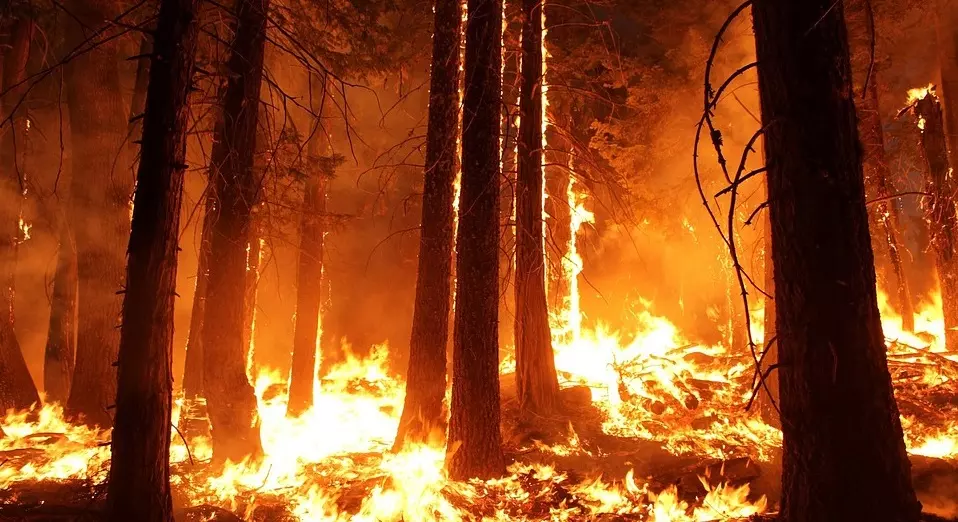
New Mexico homeowners might think their inland location buffers them from the financial toll of climate change, but they’re still paying for climate-related property damage occurring in coastal states.
New research finds that homeowners in New Mexico and other states that are more lenient in their regulation of homeowners insurance prices are subsidizing the rising cost of insuring residential property in states like California, where rate hikes haven’t kept pace with increasing climate-related losses.
Companies that insure homes—a highly regulated $100 billion market—are wrestling with the growing risks of climate change, with its extreme weather, wildfires, and hurricanes. Surging costs threaten to reduce competition as smaller companies begin to exit high-risk areas, even as demand remains high. Indeed, homeowners insurance is required in order to obtain a residential mortgage in the United States, and premiums constitute a substantial proportion of homeownership expenses, comparable in some states to the cost of mortgage interest.
A study by Harvard Business School Assistant Professor Ishita Sen, Ana-Maria Tenekedjieva, an economist at the Federal Reserve Board, and Sangmin Oh, a doctoral student at the University of Chicago’s Booth School of Business, reveals how insurers are using variations in state-level regulation of homeowners insurance rates to spread the cost of climate risks. States most prone to natural disasters tend to prevent price increases through regulation, leaving less restrictive states to pick up the slack, the research shows.
“When losses occur in California, insurance companies end up raising prices in New Mexico and Massachusetts more often than in California,” says Sen. “That’s potentially because California happens to be a very restrictive state, so it’s not so easy to change prices in California.”
“It’s a very peculiar feature in the US that you don’t have consistency across states,” says Sen. “I think having more consistent regulation across states may be desirable, because, right now, we are leaving a lot to the individual discretion of regulators.”
Left unchecked, these market dynamics could ultimately affect the availability, coverage, and price of homeowners insurance, the researchers say. They find that smaller insurance companies, which are less able to mitigate losses across state borders, are already beginning to exit higher-risk states.
Understanding regulatory friction
Companies that insure homes must file detailed applications in states where they want to increase rates. Sen, Tenekedjieva, and Oh compared the insurers’ target price increases with the prices that state regulators ultimately allowed, resulting in a measure of price “friction” in each state. The states with the most restrictive regulators also experienced the highest property damage per capita from natural disasters and other climate-related events in recent years.
The researchers found that insurers end up charging higher prices in “low-friction states,” those with the most lenient rules. When there’s a large jump in losses in high-friction states, insurers file more and larger rate-change requests to increase prices in low-friction states, even though those states are themselves less exposed to climate risk, according to Pricing of Climate Risk Insurance: Regulatory Frictions and Cross-Subsidies, the working paper by Sen, Tenekedjieva and Oh.
“OVER TIME, THIS MAKES SOCIETY LESS AND NOT MORE PREPARED TO TACKLE CLIMATE-CHANGE-RELATED CHALLENGES.
“I don’t know to what extent [regulators in low-friction states] are even aware that this goes on,” Sen says, “because you would think that if you’re more exposed to climate losses, you should be paying more. But in reality, insurance rates have risen more quickly in states like New Mexico than in California” over the past decade.
The challenge of identifying potential solutions
Although the research shows that insurers “cross-subsidize,” Sen says, it remains unclear how the practice should be addressed through policy, if at all. Cross-subsidization can lower prices in high-risk areas, keeping insurance prices affordable across the country. However, if policymakers want to discourage new development in high-risk areas, they might consider setting prices that reflect a property’s climate risk.
If regulators in lower-risk, less regulated states decide to become more restrictive, Sen says, there are a few potential ways the market might respond:
- More and larger companies could begin to exit high-risk states altogether. “The low-friction states are price hedges, if you will,” the researchers say. “It’s a way for insurance companies to get what they want right now. That’s the one lever they have to meet their earnings targets. But once that goes away, you might actually see a lot of exits in this market.”
- Insurance companies could begin to cross-subsidize within states, where low-risk ZIP codes would subsidize high-risk ZIP codes. Sen says there is some evidence to suggest this is already happening.
- Companies could increase the degree to which they raise prices on other insurance products to cover losses from homeowners insurance coverage.
- Insurers could remove specific coverage, such as against wildfire damage in California, from their homeowners insurance contracts, prompting governments to step in, as occurred with earthquake insurance in California.
However, exact outcomes depend on the complex interactions between insurers, regulators, and consumers. Sen, Tenekedjieva, and Oh are continuing to explore the potential consequences in ongoing work.
“Anecdotal evidence suggests the availability of cheap insurance is one of the reasons why high-risk areas have experienced disproportionate increases in construction and real estate development,” they write. “Over time, this makes society less and not more prepared to tackle climate-change-related challenges.”

